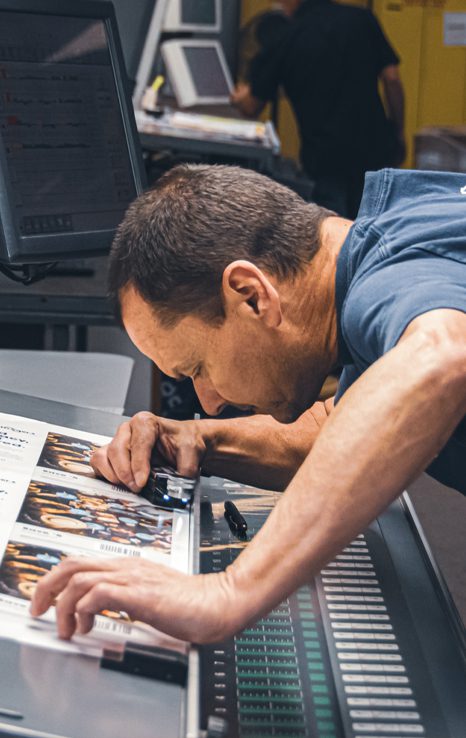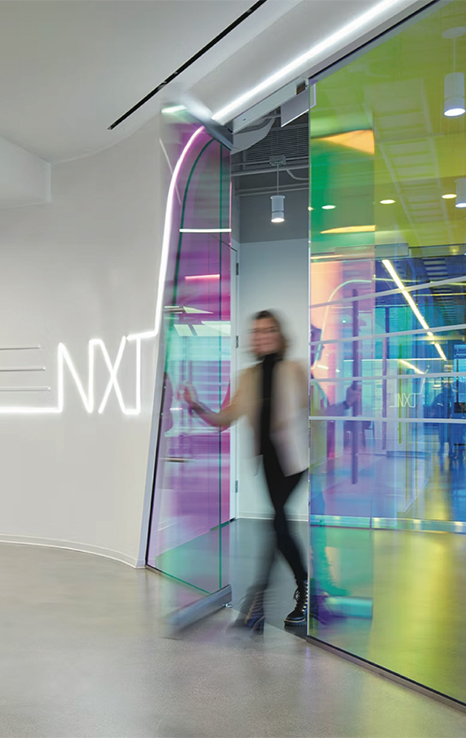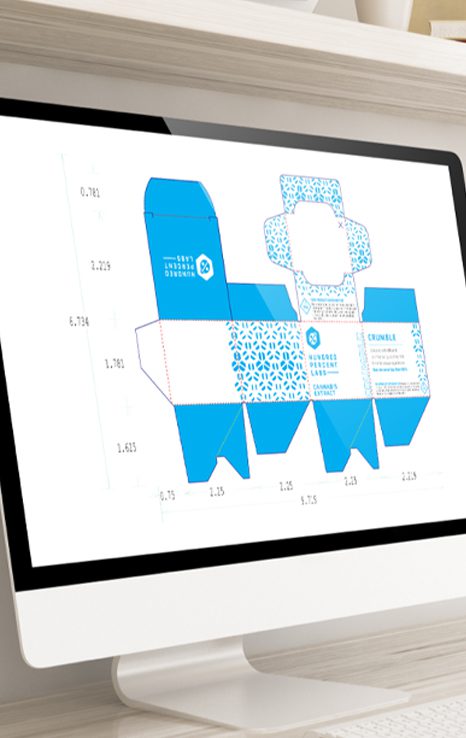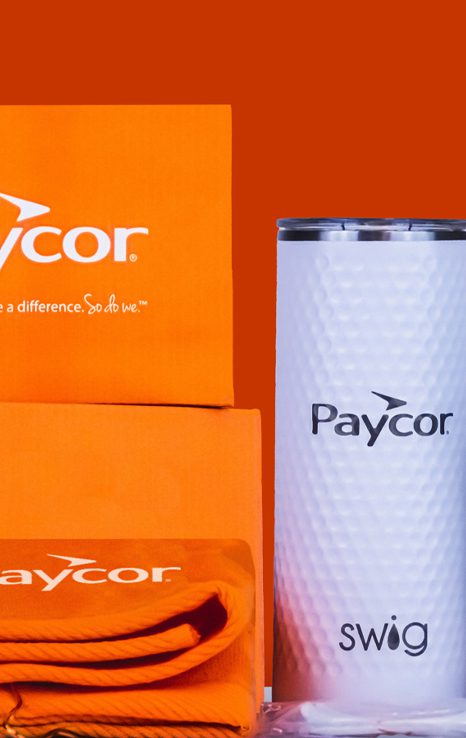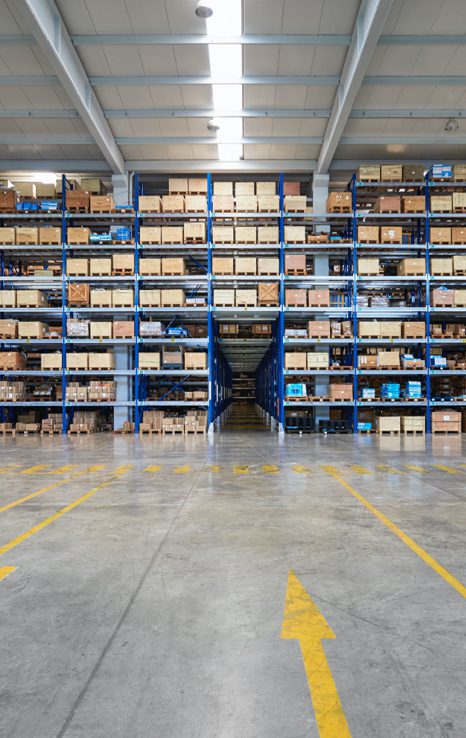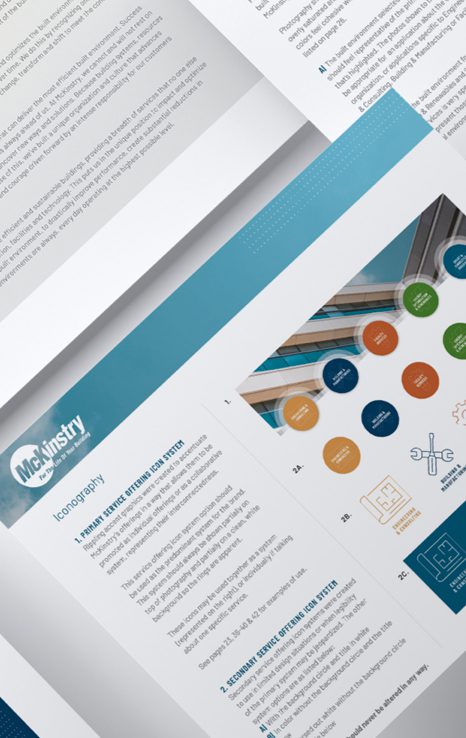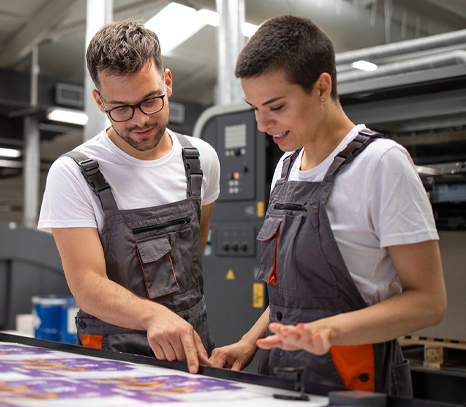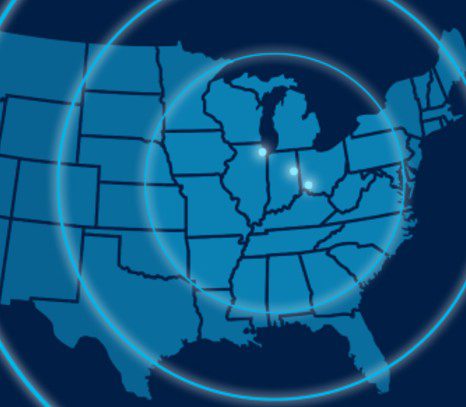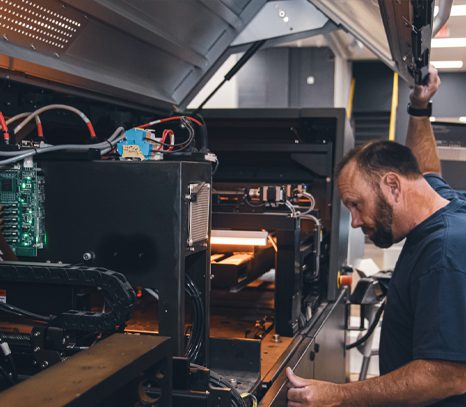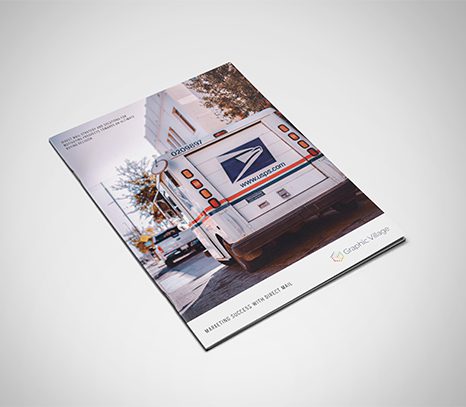Over the past several years, the evolving landscape of global trade — especially the ongoing tariffs recently imposed on imports from China — has prompted businesses to rethink where and how they source their printed materials. While tariffs have made importing printed products from China less appealing, the shift toward domestic printing is about much more than trade policy. In fact, this movement highlights the many long-term benefits of working with U.S.-based print partners — advantages that go far beyond simple economics.
Quality Assurance and Collaboration
When you partner with reliable, U.S.-based printers like Graphic Village, you gain direct access to your production team. This allows for greater collaboration, hands-on proofing, and real-time quality checks, ensuring your materials meet the highest standards.
The ability to visit the production floor, proof and review samples in person, and have open, responsive communication results in fewer errors, better quality control, and ultimately, a more refined finished product.
Supply Chain Reliability and Responsiveness
One of the most valuable benefits of domestic printing is the security and flexibility it offers to your supply chain. Global disruptions — from pandemic-related shipping delays to geopolitical uncertainty — have demonstrated how fragile overseas sourcing can be.
With domestic printers, businesses gain the ability to move faster, respond to market changes in real time, and adjust their print runs with greater agility. Whether it’s a last-minute change to product packaging, a marketing campaign refresh, or a seasonal promotion, domestic production keeps timelines predictable and turnaround times shorter.
Supporting the U.S. Economy and Jobs
Choosing American-made print is an investment in local businesses, skilled workers, and regional economies. It supports jobs in printing, packaging, logistics, and more, creating a positive economic ripple effect that benefits communities local and across the country.
For companies that value corporate social responsibility, promoting domestic partnerships can also enhance brand perception, especially among audiences who prioritize supporting American businesses.
Enhanced Security for Sensitive or Proprietary Materials
For companies producing confidential materials, intellectual property, or branded products, domestic printing offers enhanced security and peace of mind. Keeping production close to home helps safeguard sensitive designs, product launches, and proprietary information — a critical advantage in today’s competitive marketplace.
Innovation and Cutting-Edge Capabilities
The U.S. printing industry continues to evolve, with printers investing heavily in technology, automation, embellishment capabilities, and digital solutions that offer exciting new creative possibilities. From high-impact packaging enhancements to personalized direct mail campaigns, domestic printers are delivering innovative solutions that elevate brands and engage audiences in new ways.
Sustainability and Environmental Responsibility
Printing domestically also supports sustainability initiatives — an increasingly important priority for businesses and consumers alike.
By reducing the need for long-distance shipping and working with printers who adhere to U.S. environmental standards, companies can lower their carbon footprint while ensuring their products are produced responsibly. Many domestic printers are also investing in eco-friendly materials, renewable energy, and advanced waste-reduction technologies, helping brands meet their sustainability goals.
Beyond Tariffs: Embracing a Smarter Approach
While tariffs may have been the initial catalyst for companies to reconsider overseas printing, the advantages of partnering with U.S.-based printers extend far beyond trade policy. Domestic printing offers reliability, quality, sustainability, and innovation — all while strengthening the local economy and giving businesses the agility they need to succeed in a rapidly changing world.
Ready to explore how domestic printing can elevate your brand and streamline your supply chain? Contact Graphic Village today to learn how our vast array of state-of-the-art capabilities, brand enhancement solutions, and commitment to quality can help bring your vision to life — all from right here in the U.S.
Sources:
Sidley Austin LLP. (2025). United States Imposes Additional Tariffs on All Imports From China, Additional Tariffs on Canada and Mexico Paused for One Month. Retrieved from https://www.sidley.com/en/insights/newsupdates/2025/01/united-states-imposes-additional-tariffs-on-all-imports-from-china
PRINTING United Alliance. (2025). The Impact of Tariffs on the U.S. Printing Industry. Retrieved from https://www.printing.org/content/2025/02/10/the-impact-of-tariffs-on-the-u.s.-printing-industry
USA Today. (2025). What are tariffs? Here’s why they could make beer, books and coffee more expensive. Retrieved from https://www.usatoday.com/story/money/2025/03/04/what-are-tariffs-meaning/81335072007/
Printing Impressions. (2023). Why Brands Are Turning to Domestic Printing and Packaging Partners. Retrieved from https://www.piworld.com/article/why-brands-are-turning-to-domestic-printing-and-packaging-partners/
Sustainable Packaging Coalition. (2023). Trends in Sustainable Packaging: 2023 Report. Retrieved from https://sustainablepackaging.org
Printing Industries of America / PRINTING United Alliance. (2023). Economic Impact of the U.S. Printing Industry. Retrieved from https://www.printing.org
National Association of Manufacturers (NAM). (2023). The Importance of American Manufacturing. Retrieved from https://www.nam.org/issues/manufacturing/
PRINTING United Alliance / NAPCO Media. (2023). State of the Industry Report: Printing Industry Trends and Investments. Retrieved from https://www.printing.org
Packaging World. (2023). Innovation in Packaging Printing and Sustainability. Retrieved from https://www.packworld.com
U.S. Chamber of Commerce. (2022). Securing Supply Chains for Critical Industries. Retrieved from https://www.uschamber.com/assets/documents/021917_USCC_Critical_Industries_Report.pdf
McKinsey & Company. (2022). The state of AI in global supply chains and operations. Retrieved from https://www.mckinsey.com/capabilities/operations/our-insights/the-state-of-ai-in-global-supply-chains-and-operations
Specialty Graphic Imaging Association (SGIA) / NAPCO Research. (2022). Trends in Print Buying Post-COVID. Retrieved from https://www.sgia.org/resources/research
The New York Times. (2022). Tariffs on China Goods and the Supply Chain Shakeup. Retrieved from https://www.nytimes.com/2022/06/23/business/economy/china-tariffs-supply-chain.html
The Wall Street Journal. (2022). Trade War Fallout: How Tariffs Changed Global Manufacturing. Retrieved from https://www.wsj.com/articles/tariffs-manufacturing-reshoring-supply-chain-11658638801
Harvard Business Review. (2020). Global Supply Chains in a Post-Pandemic World. Retrieved from https://hbr.org/2020/09/global-supply-chains-in-a-post-pandemic-world
U.S. Environmental Protection Agency (EPA). (n.d.). The Environmental Benefits of Local Manufacturing. Retrieved from https://www.epa.gov/sites/default/files/2015-08/documents/green-manufacturing-fact-sheet.pdf






